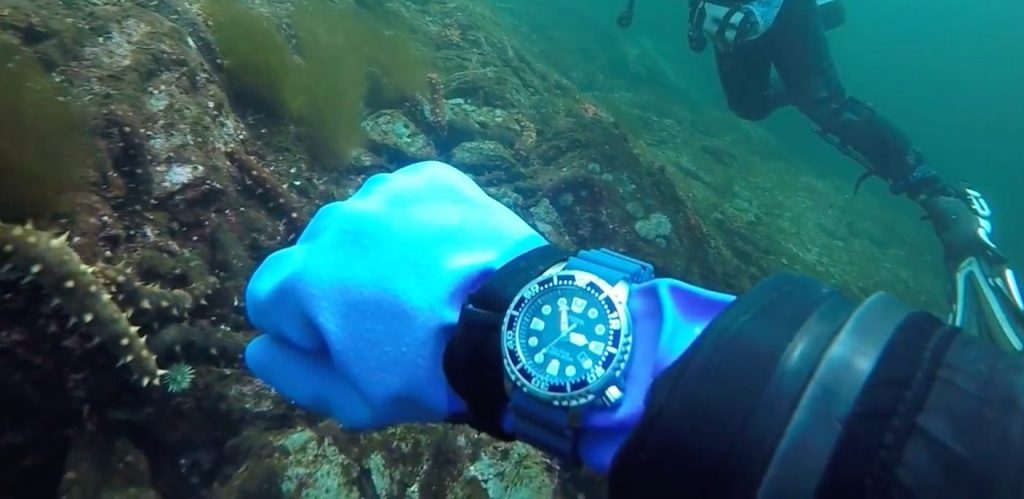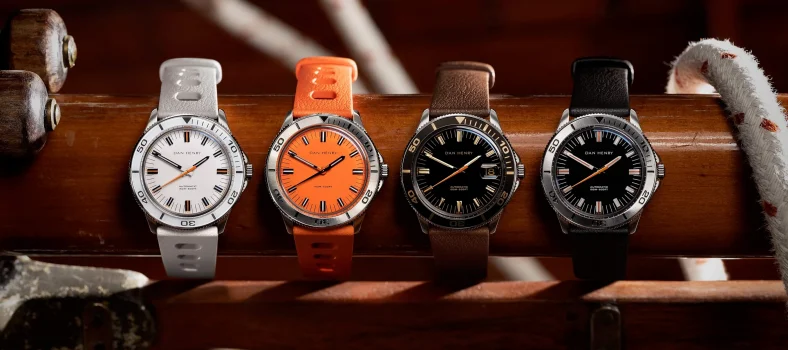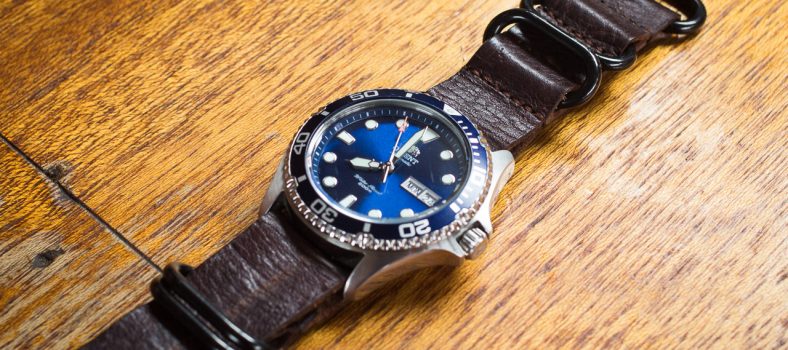Just getting into watches? Be sure to reference our guide to common watch terms while reading this.
What is a dive watch?
At it’s most basic, a dive watch (also known as a diving watch, or a diver’s) is a watch designed for underwater diving that can withstand at a minimum the pressure of 100m(330ft) of seawater.
Modern dive watches are made in accordance with the ISO 6425 standard, which sets the features that are needed to be suitable for diving, as well as tests that must be passed.
Why would you care about dive watches if you’re not a SCUBA diver yourself?
Most people who buy dive watches are in fact not divers at all, and many SCUBA divers no longer wear a dive watch. With the advent of modern dive computers, the original function of the dive watch, keeping bottom time, has been superseded by a smarter system.

Personally, while I do dive, dive watches fascinate me less because of their practical usefulness, and more because of the intricate engineering that is involved in creating a small, complex object that can withstand enormous pressures.
They’re also quite a bit tougher than you’re average watch. Need a nice watch that you never have to worry about, that can withstand an active lifestyle? A dive watch is probably for you.
Finally, I just love the aesthetics of many dive watches.
A Brief History of the Diving Watch
Efforts to make watches that could be used underwater probably go back to the 17th century. Ever since the portable watch was first invented there has been a need to protect the mechanism from dust and moisture, and to keep the lubricants contained. Over time, the techniques to seal the watch movement gradually improved.
Due to the constant evolution of the watch, it’s not known when the first truly waterproof watch was first constructed. It’s possibly a watch displayed in 1851 at the Great Exhibition of the Works of Industry of All Nations. Here’s a link to an in-depth history of the waterproof watch.
The development of durable, water and dust proof watches really took off in the late 19th century. This was Great Britain’s Age of Exploration. ‘Explorer’s Watches’ were made for expeditions to humid jungles and the frozen poles.
Early divers, equipped with hard hats, would simply place an ordinary pocket watch on the inside of the helmet so that they could keep track of time spent underwater.
Rolex is generally credited with creating the first watch that could withstand prolonged immersion. The Rolex Oyster was first made in 1926, and survived 10 hours in the water of the English Channel, during an attempt to swim across by Mercedes Gleitze.
With the invention of SCUBA diving in 1954, dive watch development really took off. Rolex first released the Submariner the same year at the Basel Watch Fair.
Throughout the 1960’s, the boom in commercial underwater work continued to push the limits of what was possible in water resistance. However, it wasn’t until 1996 that the International Organization for Standardization introduced the standards and features for the modern dive watch, ISO 6425.
Characteristics of the Modern Diver’s Watch
Features
What features should you expect in a dive watch?
ISO 6425 defines much more than just the required water resistance for the watch. It requires readability and usability features such as:
- A unidirectional (rotates in only one direction) bezel with elapsed time markings at least every 5 minutes.
- Clearly distinguishable minute markings on the watch dial.
- Ability to be read from a distance of 25cm (10in) in total darkness (requires luminous markers of some kind).
- A visible indicator that the watch is running, that can be seen in total darkness. This is usually implemented using a running second hand with a luminous tip.
- Magnetic, shock, and chemical resistance.
- Solid strap or band, with the attachment point able to withstand a force of 200N (45lb/ft).
- Battery powered watches must include an End of Life (EOL) indicator.
Watch Case
In addition to being water resistant, dive watch cases must be able to resist the corrosiveness of seawater. Usually cases are made from stainless steel, titanium, ceramics, or plastics.
The case has to be built stronger and more durable than a dress watch. Because of this, dive watches are relatively large and heavy, compared to other watches not built to withstand the same level of rugged use.
The Crystal
Dive watches use the same range of different materials for the crystal as other watches, but a dive watch crystal will be relatively thick in order to withstand water pressure.
Domed crystals are often used to provide extra strength, while also reducing the reflectiveness of the crystal, allowing it to be easier to read. These can induce some distortion in the view of the dial however. Personally, I love the look a slight dome gives to the watch.
Screw–down Crown
While several methods have been used to waterproof the winding and adjustment mechanisms, a screw-down crown is the most common.
With a screw-down crown, the crown screws into the case, sealing the interior of the watch and preventing accidental adjustments. Before the watch can be wound or the time adjusted, the crown is unscrewed, and then pulled out to adjust.
Hopefully I’ve helped you get a good understanding of just what features you should be expecting and looking for in a diver’s watch. I’ll be going into a lot more depth (pun intended) in future articles, be sure to join the mailing list to get updates on when those are published!






No Comment